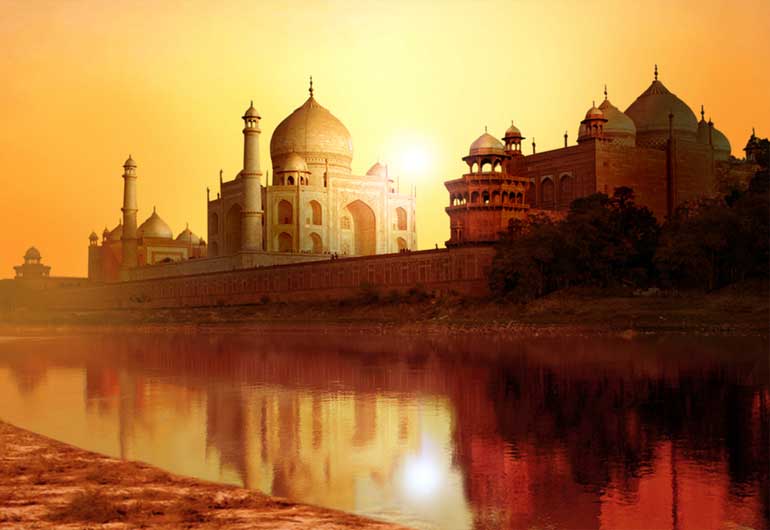About India
The past of India as a country and as the subcontinent region is incredibly interesting. Archeological findings propose Home sapiens were present on this land as long as 75,000 years back. The earliest main civilization that increases in India was the Indus Valley society. This society, which survived between 3300 BC to 1500 BC, increase in the north-western area of the country. It flourished in the region of the Indus River and various tributaries of the river. Archeological proofs of this society are found in the current-days states of Haryana, Gujarat, Punjab and Rajasthan in India and in some areas of Pakistan. The people of this civilization are believed to be extremely skilled in metallurgy and in making a variety of handiwork items. This humanity came to an end due to a number of aspects including the natural disasters and coming of Aryans.
Indus Valley society was followed by the Vedic era in India. Vedic era that lasted for about 1000 years from 1500 BC to 500 BC was distinguished by Indo-Aryan civilization and the Vedas, the sacred books for the Hindus. This was the era when a new social government system or kingdoms joined in the civilization known as Mahajanapadas. These were the great kingdoms which joined mostly across the Indo-Gangetic plains. Magadha grew as a main kingdom throughout this age, while Nalanda University became a great learning institution of the world. In around 6th century BC, birth of 2 great philosophers and thinkers on the land of India gave a new path to history of India. These 2 thinkers were Gautam Buddha and Mahavira. The philosophies of Buddha and Mahavira spread in main part of India which ultimately led to the birth to 2 new religions – Buddhism and Jainism.
Throughout 4th century BC, Maurya Kingdom gained control of most of the subcontinent. In around 4th century AD, Gupta Kingdom joined in northern division of India and ruled much of northern and central India for the next 200 years. It was the time when various other kingdoms were also joining in the southern India including Cholas, Chalukyas, Pallavas and Pandyas. In 7th century, Islam reached the Indian subcontinent through Muslim traders who used to visit Kerala for business reason. Near the beginning of 8th century, the first Muslim rule in Sindh area under Muhammad bin Qasim, who was an Arab commander. It helped the attackers from central Asia during their attacks on India between 10th and 15th centuries AD.
In 1526, Babar, the descendant of Timur, setup the Mughal kingdom in Indian subcontinent that extended into current days India, Pakistan, Afghanistan and Bangladesh. Humayun, the son of Babur, could not hold the kingdom and was defeated by Sher Shah Suri in 1540. When Sher Shah died, his son along with a Hindu King Hemu ruled the north India for next 16 years. Finally, Akbar, the son of Humayun, defeated Hemu in the 2nd Battle of Panipat in 1556. For next 150 years, Mughal Kingdom ruled main part of India, mainly the northern India. Various Rajput kingdoms as well as numerous Hindu states also existed at this time in different areas of the country. Akbar is measured the greatest king of Mughal Kingdom who setup good connection with non-Muslim communities of India mainly the Hindus. He confirmed a ban on killing of animals throughout the holy days of Jainism. He also removed the Jajiya tax applied on non-Muslims. He married Hindu princess to set up good links with local Hindu kings. However, afterward emperors were not so considerate to non-Muslim communities. Aurangazeb smashed numerous Hindu temples throughout his period.
Decline of Mughal Kingdom started from early 18th century. Nader Shah, the mighty king of Iran defeated the Mughal forces in 1739. He captured Delhi and carried away with him many assets from India including the Peacock Throne. Early 18th century was also the time when the British were trying to set up their colonies in Asia. By late-18th century, the British East India Company had gained control of most division of the India. The foremost Indian Rebellion for independence occurred in 1857, which failed but led the British Crown to take India under its direct supervision.
Near the starting of 20th century, people of India united them and launched a nationwide fight against the British. Mahatma Gandhi joined as the most famous leader who guided the people of India towards the aim of getting independence from the British rule. Mahatma Gandhi started a number of peaceful mass movements to join people of India against the British Raj. Numerous hardliners and revolutionaries adopted different way that was use of weapons against the British. Chandrashekhar Azad, Bhagat Singh, Raj Guru, Sukhdev, etc., were among the leading revolutionaries of that era. Subhash Chandra Bose setup his Azad Hind Force to battle against the British. After so many sacrifices of the people of India, the country gained independence in 1947. However, it was partitioned into 2 countries. The world saw the birth of a new country that was called Pakistan. After independence, India accepted the democratic way of governance and nowadays boats of being the biggest democratic country of the earth.
To many, India tours have even acted as life changing experiences. The attractions in India are uncountable across its length and breadth, which can be seen in India tourism. Tour to India has mainly two cover-ups, one that peacefulness and the other of destiny. When the tourists chooses to take help form the experts like India tour operators, they are guaranteed of delightful experiences only. Some of the evergreen tour packages of India are Golden Triangle Tour, trekking tours, Buddhist pilgrimage routes, Kerala backwaters tour, South India Temple Tour Himalayan ranges, rafting in Rishikesh, biking tour to Rohtang Pass, ayurveda tours, and many more.


